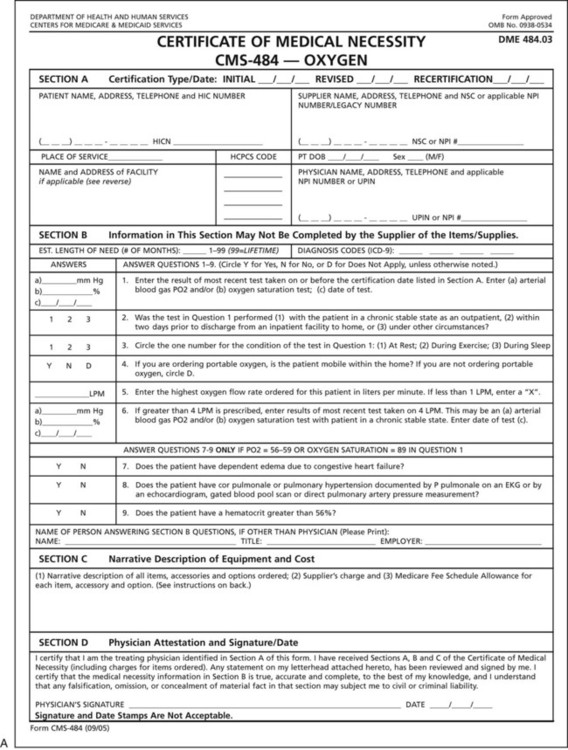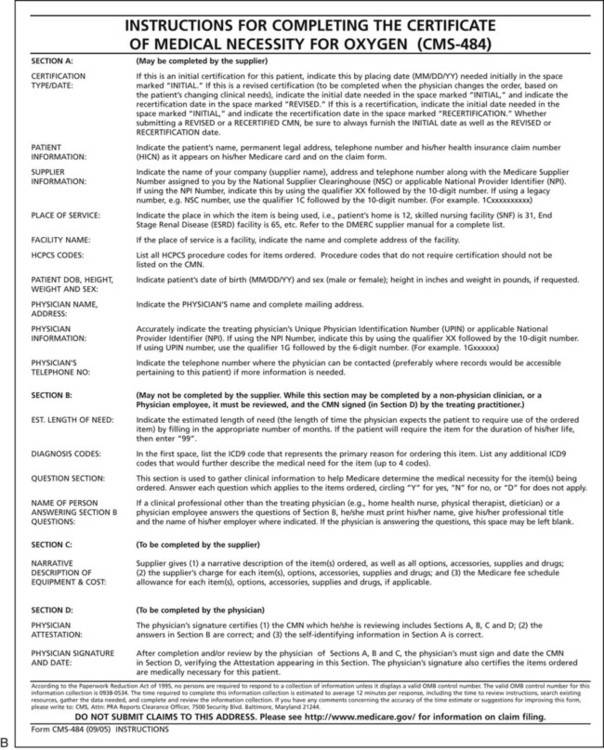1. Describe the alternative care settings in which a respiratory care is performed. 2. Identify eligibility for home oxygen therapy. 3. Describe proper guidelines for discharge planning. 4. Describe how a respiratory therapist helps ensure an effective discharge plan. 5. Explain the use of oxygen therapy in the home care setting using different oxygen systems. 6. Explain how to select, assemble, and monitor equipment used for invasive ventilator care in the alternative setting. 7. Instruct the family or patient caregivers on basic patient assessment. Patients receive care in a variety of settings following discharge from an acute care facility. As a respiratory therapist (RT), you may work outside the walls of an acute care hospital to provide the respiratory care to your patients in skilled nursing facilities (SNFs), long-term acute care hospitals (LTACHs), or even the patient’s home. With oxygen therapy being the most common modality of respiratory care in the alternative setting, RTs are frequently responsible for home care visits and for helping patients with home oxygen issues and questions. This includes the use of oxygen with ventilators and the management of artificial airways. Oxygen is a drug and requires a prescription for its use in the alternative care setting. Eligibility for home oxygen therapy is based on a patient’s documented hypoxemia Box 29-1. An example of the certificate of medical necessity from the Centers for Medicare and Medicaid Services is illustrated in Figure 29-1. This chapter will cover concepts and skills relating to discharge planning as well as oxygen and ventilatory support in the alternative setting. The sleep laboratory as an alternative setting is discussed in Chapter 28. 1. Review the patient’s chart. 2. Verify transfer order to alternative setting. 3. Assess the patient and the family members for need for health teaching. 4. Collaborate with the physician and staff in other disciplines about the patient’s need for referral for home health care services provided by an extended care facility. 1. Perform patient evaluation, including the following: a. Assess the patient’s medical condition. b. Evaluate the psychosocial condition of the patient and the family. c. Determine the respiratory and ventilatory support required. d. Evaluate the patient’s physical and functional ability to perform activities of daily living. 2. Perform a site evaluation for continuing care, including the following: a. Determine the number of personnel required. b. Evaluate the physical environment’s safety and suitability. c. Establish the equipment and supplies needed. 3. Develop a multidisciplinary plan of care based on the patient’s needs and goals, including the following: a. Plan for integration into the community. b. Plan for administration of medications. c. Determine patient self-care, when appropriate. d. Establish a method for ongoing assessment of outcomes. e. Determine the roles and responsibilities of the team members for daily care management. f. Establish a method to assess the growth and development of pediatric patients. g. Set up a documented mechanism for securing and training additional caregivers. h. Set up a mechanism for communication among all of the health care team members. i. Put an alternative emergency and contingency plan in place. k. Plan for the use, maintenance, and troubleshooting of equipment. Three sources for oxygen (O2) therapy you will come across in the alternative setting are (1) compressed gas cylinders, (2) liquid systems, and (3) concentrators. Some safe home oxygen therapy principles are given in Box 29-2. Gas cylinders always provide 100% oxygen at any liter flow prescribed with the actual fractional amount of inspired oxygen (FiO2) being delivered to the patient dependent on the delivery device used. Compressed gas cylinders are universally available and come in many sizes. Small cylinders are used during ambulation. However, they do have a limited gas volume when compared to larger cylinders, such as an H cylinder (H cylinder at 2 L/min will last a little more than 2 days). The cylinder may be heavy at times, and safety concerns and hazards such as fire or fracture of the cylinder stem do exist. Calculations of the duration of the supply of gas remaining in a compressed gas cylinder are provided in Chapter 14.
Respiratory Care in Alternative Settings and Transport
Equipment
» Skill Check Lists
29-1 Discharge Planning
Procedural Preparation
Implementation
29-2 Using Home Oxygen Equipment



























